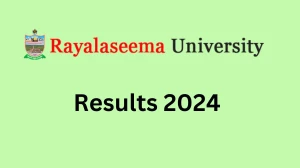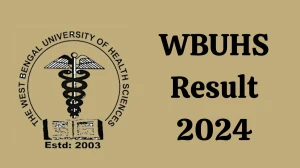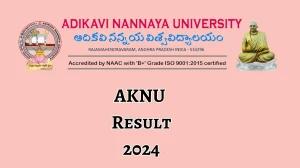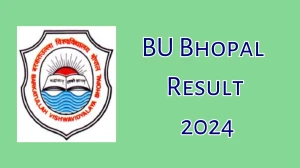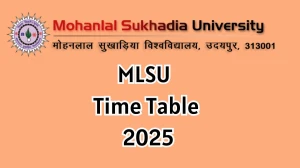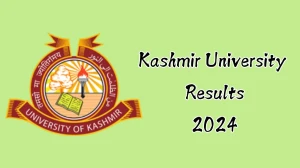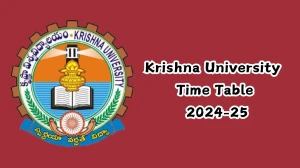- Rojgarlive »
- Education »
- SRMJEEE Syllabus 2024 srmist.edu Check and download Here
SRMJEEE Syllabus 2024 srmist.edu Check and download Here
by Keerthika
Updated Apr 23, 2024
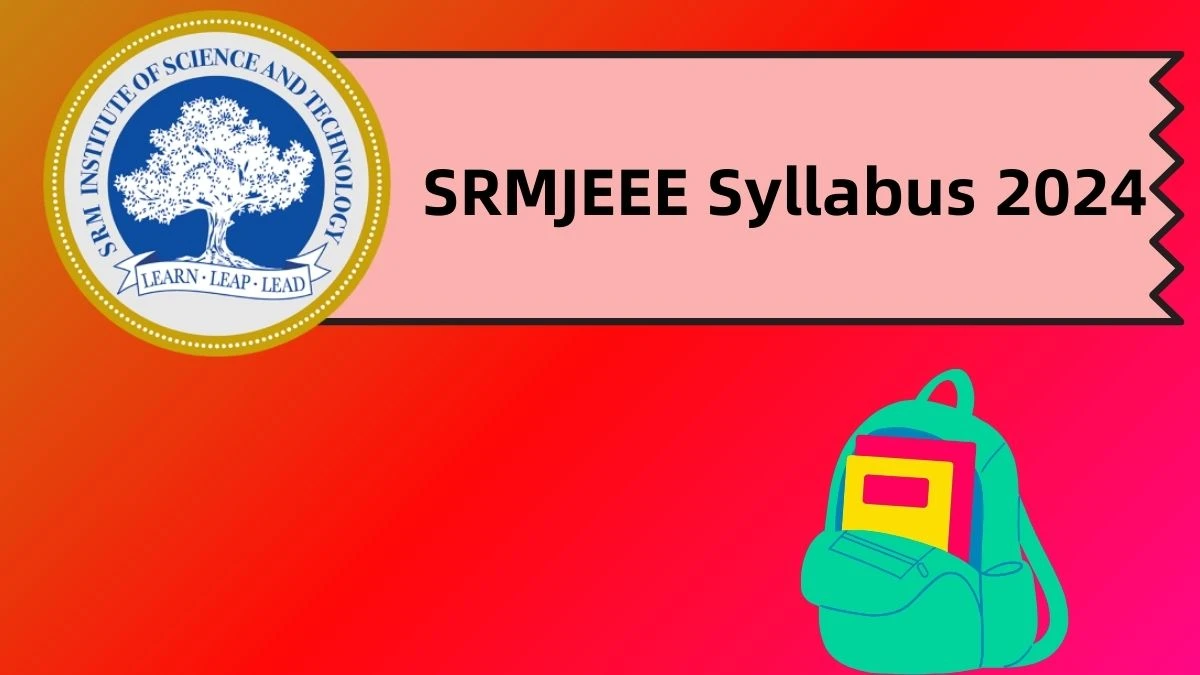
SRMJEEE Syllabus 2024 @ srmist.edu
The detailed SRMJEEE 2024 syllabus has been published on the official website of SRMIST, srmist.edu. The syllabus for SRMJEE 2024 has been outlined in the information brochure released by the authorities. The official SRMJEEE 2024 syllabus PDF can be found on the corresponding webpage. It encompasses topics from Physics, Chemistry, and Mathematics that will be assessed in the SRMJEE exam. Additionally, candidates are advised to review the SRMJEEE exam pattern in conjunction with the SRM University BTech exam syllabus.
Check - SRMJEEE Syllabus 2024
Physics Syllabus
|
Units |
Topics Covered |
|
Units and Measurement, Mechanics |
Units for measurement, system of units-S.I., fundamental and derived units, measurements - errors in measurement - significant figures, dimensions - dimensional analysis - applications. Laws of Motion: Newton’s laws of motion - force and inertia - impulse and momentum - law of conservation of linear momentum - applications - projectile motion uniform circular motion -friction - laws of friction - applications - centripetal force. Work, Energy, and Power: Work - energy - potential energy and kinetic energy – power - collision-elastic and inelastic collisions. |
|
Gravitation, Mechanics of Solids and Fluids
|
Gravitation: The universal law of gravitation, acceleration due to gravity - variation of ‘g’ with altitude, latitude, and depth - gravitation potential - escape velocity and orbital velocity - geostationary satellites - Kepler’s laws of planetary motion. Mechanics of solids and fluids: Solids - elastic behavior, stress-strain - Hooke’s law - Modulli of elasticity -relation between them - surface tension capillarity - applications – viscosity - Poiseuille’s formula - Stokes law applications - streamline and turbulent flow - Reynolds number - Bernoulli’s theorem - applications. |
|
Electrostatics |
Electric charge - Conservation laws - Coulomb’s law-principle of superposition - continuous charge distribution - electric field - electric field lines - electric dipole -electric field due to a dipole - torque on a dipole in uniform electric field - Electric flux - Gauss’s theorem - field due to infinitely long straight wire - uniformly charged infinite plane sheet and uniformly charged thin spherical shell.
Electric potential - potential difference - equipotential surfaces - electrical potential energy - Dielectrics and electric polarization - capacitors and capacitance - combination of capacitors in series and in parallel - capacitance of a parallel plate capacitor with and without dielectric medium - energy stored in a capacitor. |
|
Current Electricity |
Electric current - drift velocity - mobility - Ohm’s law -V-I characteristics - electrical energy and power - electrical resistivity and conductivity - Carbon resistors - series and parallel combinations of resistors - temperature dependence - Internal resistance of a cell - potential difference and emf of a cell - combination of cells in series and in parallel - Kirchhoff’s laws – applications - Wheatstone bridge - Metre bridge - Potentiometer - comparison of EMF of two cells - measurement of internal resistance of a cell. |
|
Magnetism and Magnetic Effects of Current
|
Earth’s magnetic field and magnetic elements -magnetic field due to a magnetic dipole - torque on a magnetic dipole - tangent law, tangent galvanometer deflection magnetometer - magnetic properties of a material – dia, para and ferromagnetic materials - applications. Magnetic effects of electric current – Biot Savart’s law - force on a moving charge in a uniform magnetic field - moving coil galvanometer - conversion of a galvanometer into voltmeter and ammeter. |
|
Electromagnetic Induction, Alternating Currents and Electromagnetic Waves |
Electromagnetic induction - Faraday’s laws, induced EMF and current - Lenz’s Law - Eddy currents - Self and mutual induction - Alternating currents, peak and RMS value of alternating current/voltage - reactance and impedance - LC oscillations - LCR series circuit - resonance - power in AC circuits - power factor - wattless current - AC generator and transformer - Electromagnetic waves – characteristics - Electromagnetic spectrum. |
|
Optics |
Reflection of light - spherical mirrors - mirror formula - refraction of light -total internal reflection- optical fibers - refraction at spherical surfaces – lenses - thin lens formula - lensmaker’s formula – magnification - power of a lens - combination of thin lenses in contact - refraction of light through a prism - Scattering of light -Microscopes and astronomical telescopes.
Wave front and Huygen’s principle - reflection and refraction of plane wave at a plane surface- laws of reflection and refraction using Huygen’s principle – Interference - Young’s double slit experiment and expression for fringe width - diffraction due to a single 12 slit -width of central maximum – polarization - plane polarised light - Brewster’s law. |
|
Dual Nature of Radiation and Matter & Atomic Physics |
Dual nature of radiation - Photoelectric effect - Hertz and Lenard’s observations - Einstein’s photoelectric equation-particle nature of light. Matter waves-wave nature of particles - de-Broglie relation - Davisson Germer experiment - Alpha-particle scattering experiment - Rutherford’s model of atom - Bohr model - hydrogen spectrum. |
|
Nuclear Physics |
Nuclear radius, mass, binding energy, density, isotopes, mass defect- Bainbridge mass spectrometer-nuclear forces neutron discovery – radioactivity-α, β and γ decay-half life - mean life-artificial radio activity-radio isotopes-radio carbon dating-radiation hazards. Nuclear fission nuclear reactor-nuclear fusion-hydrogen bomb - cosmic rays-elementary particles. |
|
Electronic Devices |
Semiconductors-doping-types-PN junction diode – biasing-diode as a Rectifier – Special purpose PN junction diodes – LED – photodiode - solar cell and zener diode - characteristics - zener diode as a voltage regulator- transistors-transistor characteristics – amplifier – gain-feedback in amplifiers-logic gates basic logic gates-NOT, OR, AND, NOR, NAND-universal gates-De Morgan’s theorems. |
Chemistry Syllabus
|
Units |
Topics Covered |
|
Solutions |
Types of solutions, expression of concentration of solutions of solids in liquids, solubility of gases in liquids, solid solutions, colligative properties - relative lowering of vapour pressure, Raoult’s law, elevation of boiling point, depression of freezing point, osmotic pressure, determination of molecular masses using colligative properties, abnormal molecular mass, Van’t Hoff factor. |
|
Electrochemistry |
Redox reactions, conductance in electrolytic solutions, specific and molar conductivity, variations of conductivity with concentration, Kohlrausch’s Law, electrolysis and law of electrolysis (elementary idea), dry cell-electrolytic cells and Galvanic cells, EMF of a cell, standard electrode potential, Nernst equation and its application to chemical cells, Relation between Gibbs energy change and EMF of a cell, fuel cells, corrosion. |
|
Chemical Kinetics |
Rate of a reaction (Average and instantaneous), factors affecting rate of reaction: concentration, temperature, catalyst; order and molecularity of a reaction, rate law and specific rate constant, integrated rate equations and half-life (only for zero and first order reactions), concept of collision theory (elementary idea, no mathematical treatment). Activation energy, Arrhenius equation. |
|
Surface Chemistry |
Adsorption - physisorption and chemisorption, factors affecting adsorption of gases on solids, catalysis, homogenous and heterogenous activity and selectivity; enzyme catalysis colloidal state distinction between true solutions, colloids and suspension; lyophilic, lyophobic multi-molecular and macromolecular colloids; properties of colloids; Tyndall effect, Brownian movement, electrophoresis, coagulation, emulsion - types of emulsions. |
|
P -Block Elements |
Group 16 Elements: General introduction, electronic configuration, oxidation states, occurrence, trends in physical and chemical properties, dioxygen: Preparation, Properties and uses, classification of Oxides, Ozone, Sulphur - allotropic forms; compounds of Sulphur: Preparation Properties and uses of Sulphur-dioxide, Sulphuric Acid: industrial process of manufacture, properties and uses; Oxoacids of Sulphur (Structures only). Group 17 Elements: General introduction, electronic configuration, oxidation states, occurrence, trends in physical and chemical properties; compounds of halogens, Preparation, properties and uses of Chlorine and Hydrochloric acid, interhalogen compounds, Oxoacids of halogens (structures only). Group 18 Elements: General introduction, electronic configuration, occurrence, trends in physical and chemical properties, uses. |
|
:‘D’ and ‘F’ Block Elements |
General introduction, electronic configuration, occurrence and characteristics of transition metals, general trends in properties of the first row transition metals - metallic character, ionization enthalpy, oxidation states, ionic radii, colour, catalytic property, magnetic properties, interstitial compounds, alloy formation Lanthanoids - Electronic configuration, 13 oxidation states, chemical reactivity and lanthanoid contraction and its consequences. |
|
Coordination Compounds |
Coordination compounds - Introduction, ligands, coordination number, colour, magnetic properties and shapes, IUPAC nomenclature of mononuclear coordination compounds. Bonding, Werner’s theory, VBT, and CFT; structure and stereoisomerism, importance of coordination compounds (in qualitative inclusion, extraction of metals and biological system). |
|
Haloalkanes And Haloarenes |
Haloalkanes: Nomenclature, nature of C-X bond, physical and chemical properties, mechanism of substitution reactions, optical rotation. Haloarenes: Nature of C-X bond, substitution reactions (Directive influence of halogen in monosubstituted compounds only). Uses and environmental effects of - dichloromethane, trichloromethane, tetrachloromethane, iodoform, freons, DDT. |
|
Alcohols, Phenols and Ethers |
Alcohols: Nomenclature, methods of preparation, physical and chemical properties (of primary alcohols only), identification of primary, secondary and tertiary alcohols, mechanism of dehydration, uses with special reference to methanol and ethanol. Phenols: Nomenclature, methods of preparation, physical and chemical properties, acidic nature of phenol, electrophillic substitution reactions, uses of phenols. Ethers: Nomenclature, methods of preparation, physical and chemical properties, uses. |
|
Aldehydes, Ketones and Carboxylic Acids
|
Aldehydes and Ketones: Nomenclature, nature of carbonyl group, methods of preparation, physical and chemical properties, mechanism of nucleophilic addition, reactivity of alpha hydrogen in aldehydes, uses.Carboxylic Acids: Nomenclature, acidic nature, methods of preparation, physical and chemical properties; uses. |
|
Organic Compounds Containing Nitrogen
|
Amines: Nomenclature, classification, structure, methods of preparation, physical and chemical properties, uses, identification of primary, secondary and tertiary amines. Cyanides and Isocyanides Diazonium salts: Preparation, chemical reactions and importance in synthetic organic chemistry |
|
Biomolecules |
Carbohydrates - Classification (aldoses and ketoses), monosaccahrides (glucose and fructose), D-L configuration oligosaccharides (sucrose, lactose, maltose), polysaccharides (starch, cellulose, glycogen); Importance of carbohydrates. Proteins - Elementary idea of - amino acids, peptide bond, polypeptides, proteins, structure of proteins - primary, secondary, tertiary structure and quaternary structures (qualitative idea only), denaturation of proteins; enzymes. Vitamins - Classification and functions. Nucleic Acids: DNA and RNA. |
Mathematics Syllabus
|
Units |
Topics Covered |
|
Sets, Relations and Functions |
Sets and their representations, union, intersection, and complements of sets and their algebraic properties, relations, equivalence relations, mappings, one-one, into and onto mappings, composition of mappings. |
|
Complex Numbers and Quadratic Equations
|
Complex numbers in the form a+ib and their representation in a plane. Argand diagram. Algebra of complex numbers, modulus and argument of a complex number, square root of a complex number. Cube roots of unity, triangle inequality. Quadratic equations in real and complex number system and their solutions. Relation between roots and coefficients, nature of roots, formation of quadratic equations with given roots; symmetric functions of roots, equations reducible to quadratic equations. |
|
Matrices, Determinants and their Applications
|
Determinants and matrices of order two and three, properties of determinants, evaluation of determinants 14 Addition and multiplication of matrices, adjoint and inverse of matrix. Computing the rank of a matrix– test of consistency and solution of simultaneous linear equations using determinants and matrices |
|
Combinatorics |
Permutations and Combinations: Fundamental principle of counting: permutation as an arrangement and combination as selection, meaning of P(n,r) and C(n,r). Simple applications Mathematical Induction and its Applications: Stating and interpreting the principle of mathematical induction. Using it to prove formula and facts. |
|
Algebra |
Binomial theorem and its Applications: Binomial theorem for a positive integral index; general term and middle term; Binomial theorem for any index. Properties of binomial coefficients. Simple applications for approximations. Sequences and Series : Arithmetic, geometric and harmonic progressions. Insertion of arithmetic, geometric and harmonic means between two given numbers. Relation between A.M., G.M. and H.M. arithmetic, geometric series, exponential and logarithmic series. |
|
Differential Calculus and its Applications |
Polynomials, rational, trigonometric, logarithmic and exponential functions. Inverse functions. Graphs of simple functions. Limits, continuity, differentiation of the sum, difference, product and quotient of two functions, differentiation of trigonometric, inverse trigonometric, logarithmic, exponential, composite and implicit functions, derivatives of order up to two. Applications of Differential Calculus: Rate of change of quantities, monotonic–increasing and decreasing functions, maxima and minima of functions of one variable, tangents and normals, Rolle’s and Lagrange’s mean value theorems. Ordinary differential equations, their order and degree. Formation of differential equations. Solution of differential equations by the method of separation of variables. Solution of homogeneous and linear differential equations and those of the type dy/dx + p(x)y=q(x). |
|
Integral Calculus and its Applications |
Integral as an anti-derivative. Fundamental integrals involving algebraic, trigonometric, exponential and logarithmic functions. Integration by substitution, by parts and by partial fractions. Integration using trigonometric identities. Integral as limit of a sum. Properties of definite integrals. Evaluation of definite integrals; Determining areas of the regions bounded by simple curves. |
|
Analytical Geometry |
Straight Lines in Two Dimensions: Cartesian system of rectangular co-ordinates in plane, distance formula, area of a triangle, condition for the collinearity of three points and section formula, centroid and incentre of a triangle, locus and its equation, translation of axes, slope of a line, parallel and perpendicular lines, intercepts of a line on the coordinate axes. Circles in Two Dimensions: Standard form of equation of a circle, general form of the equation of a circle, its radius and centre, equation of a circle in the parametric form, equation of a circle when the end points of a diameter are given, points of intersection of a line and a circle with the centre at the origin and condition for a line to be tangent to the circle. Conic Sections in Two Dimensions: Sections of cones, equations of conic sections (parabola, ellipse and hyperbola) in standard form, condition for y = mx+c to be a tangent and point(s) of tangency. |
|
Vector Algebra |
Vectors and scalars, addition of vectors, components of a vector in two dimensions and three dimensional space, scalar and vector products, scalar and vector triple product. Application of vectors to plane geometry. |
|
Statistics and Probability Distribution |
Measures of Central Tendency and Dispersion: Calculation of mean, median and mode of grouped and ungrouped data. Calculation of standard deviation, variance and mean deviation for grouped and ungrouped data. Probability: Probability of an event, addition and multiplication theorems of probability and their applications; Conditional probability; Baye’s theorem, probability distribution of a random variable; binomial and Poisson distributions and their properties. |
|
Trigonometry |
Trigonometry ratios, compound angles, trigonometrical equations, solution of triangles, Trigonometrically identities and equations-Inverse trigonometric functions and their properties. 15 Properties of triangles, including, incentre, circumcentre and orthocenter, solution of triangles. |
Exam Pattern 2024
|
Particulars |
Details |
|
Mode of Examination |
Online |
|
Duration of Examination |
2 hours 30 minutes |
|
Language of Exam |
English |
|
Type of Questions |
Objective (Multiple Choice Questions) |
|
Sections |
|
|
Total Questions |
125 |
|
Total Marks |
125 |
|
Marking Scheme |
1 mark will be awarded for each correct answer |
|
Negative Marking |
No negative marking |
SRMJEEE Syllabus 2024? -FAQ
Yes, the authorities have released the syllabus of SRMJEEE 2024.
As per the SRMJEEE syllabus, there will be five sections - Physics, Chemistry, Mathematics/ Biology, English, and Aptitude.


